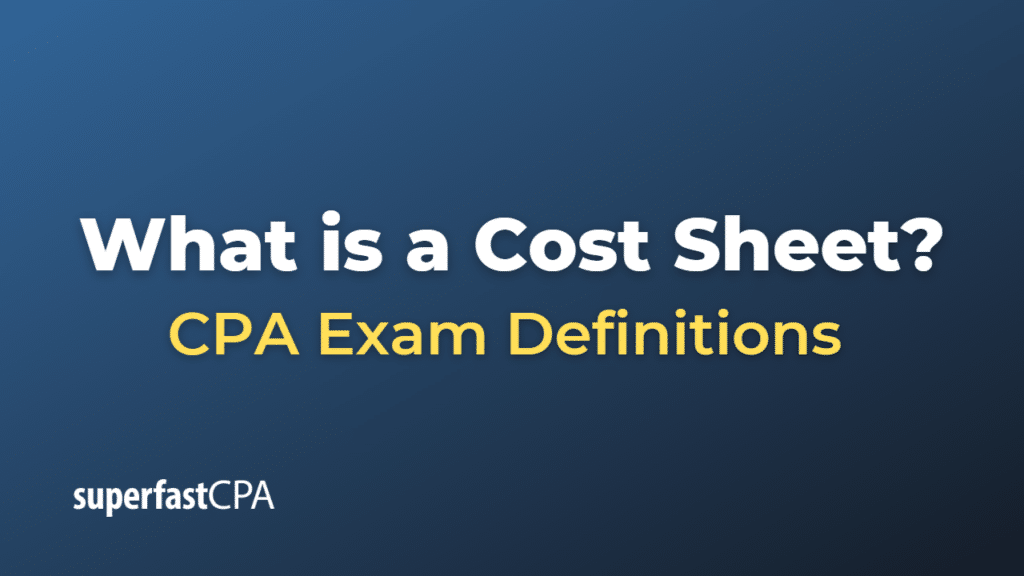Cost Sheet
A cost sheet, also known as a cost statement or cost card, is a document that provides a detailed breakdown of the various costs incurred in producing a specific product or service or during a certain period of business operation. The main purpose of a cost sheet is to determine the total cost of production and help in analyzing the cost components to make informed decisions on pricing, cost control, and profitability.
A cost sheet typically includes the following elements:
- Direct Material Costs: These are the costs of raw materials and components used in producing a product or delivering a service.
- Direct Labor Costs: These are the wages and salaries of employees directly involved in the production process or service delivery.
- Manufacturing Overhead Costs: These are the indirect costs associated with the production process, such as utilities, depreciation, maintenance, and factory rent.
- Administrative Overhead Costs: These are the indirect costs associated with the overall management of the business, such as office rent, salaries of administrative staff, and office supplies.
- Selling and Distribution Costs: These are the costs incurred in marketing, selling, and delivering the product or service to customers, such as advertising, sales commissions, and transportation costs.
- Total Cost: This is the sum of all the costs mentioned above, representing the total cost of production or service delivery.
- Cost per Unit: The total cost is divided by the number of units produced or services provided to arrive at the cost per unit. This helps in determining the selling price and analyzing the profitability of the product or service.
A cost sheet is an essential tool for businesses as it helps in cost control, decision-making, and pricing strategies. By analyzing the cost components, management can identify areas where costs can be reduced, efficiency can be improved, and overall profitability can be increased.
Can you provide an example?
Let’s consider a hypothetical example of a furniture manufacturing company that produces wooden tables. Here’s a simplified cost sheet for producing 100 tables:
- Direct Material Costs: The company spends $5,000 on wood, $500 on screws and nails, and $400 on varnish, for a total direct material cost of $5,900.
- Direct Labor Costs: The company pays its carpenters a total of $3,000 in wages to manufacture the 100 tables.
- Manufacturing Overhead Costs: The company incurs $1,200 in utility costs, $800 in equipment depreciation, and $600 in factory rent, for a total manufacturing overhead cost of $2,600.
- Administrative Overhead Costs: The company has $500 in office supplies costs and $1,500 in administrative staff salaries, for a total administrative overhead cost of $2,000.
- Selling and Distribution Costs: The company spends $1,000 on advertising, $500 on delivery costs, and $700 on sales commission, for a total selling and distribution cost of $2,200.
- Total Cost: Adding up all the costs, the total cost of producing 100 tables is $5,900 (materials) + $3,000 (labor) + $2,600 (manufacturing overhead) + $2,000 (administrative overhead) + $2,200 (selling and distribution) = $15,700.
- Cost per Unit: The cost per unit (table) is the total cost divided by the number of units produced, so $15,700 ÷ 100 = $157 per table.
This cost sheet provides a clear view of the total cost and the cost per unit, which can help the company in setting the selling price of the tables, controlling costs, and making informed business decisions. For instance, if the company plans to sell tables at a price of $200 each, it would make a profit of $43 per table ($200 selling price – $157 cost).













